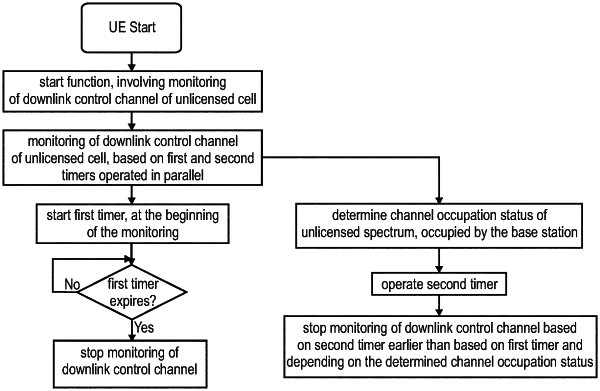| CPC H04W 24/08 (2013.01) [H04W 68/005 (2013.01); H04W 72/23 (2023.01); H04W 74/0841 (2013.01); H04W 74/0866 (2013.01); H04W 76/28 (2018.02)] | 12 Claims |

|
1. A user equipment (UE) comprising:
a receiver, which, in operation, monitors a downlink control channel of an unlicensed radio cell for information intended to the UE, the unlicensed radio cell operating in an unlicensed spectrum and being controlled by a base station that is in communication with the UE; and
processing circuitry which, in operation, controls the monitoring of the downlink control channel based on a first timer and a second timing trigger,
wherein the first timer is used to limit a maximum time that the downlink control channel is to be monitored, by starting the first timer at a beginning of the monitoring of the downlink control channel and stopping the monitoring of the downlink control channel upon expiry of the first timer,
wherein the second timing trigger is used to stop the monitoring of the downlink control channel earlier than the first timer depending on a channel occupation status of the unlicensed spectrum of the radio cell by the base station,
wherein, responsive to the second timing trigger, the processing circuitry determines that the base station currently occupies the unlicensed spectrum and stops the monitoring in a current channel occupation of the unlicensed spectrum, wherein the monitoring is performed until the expiry of the first timer in case the base station does not currently occupy the unlicensed spectrum.
|